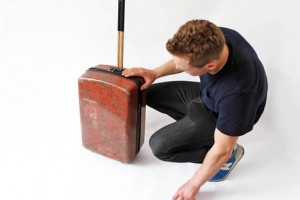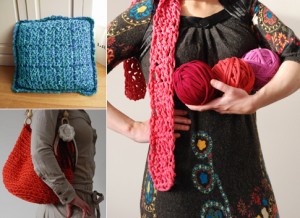Upcycling
A couple of weeks ago I wrote about a big new competition to help develop the circular economy and, on the same theme, a new film called Trashed. This time I want to mention a couple of examples of upcycling.

The Terracase is made from recycled wool carpets and bioresin
Upcycling, as you may know, is the process of recycling a material into something that has higher value than the original use. And it’s not easy to do. Yet this is the ultimate challenge of the circular economy–to not only eliminte waste but also turn that waste into higher value goods and services.
The first example is a suitcase made from wool (old carpets) and bio resin (from rapeseed oil). Designer and New Zealander Daniel McLaughlin first created the biowool suitcase for his Royal College of Art project but later recieved a Dyson Foundation grant to develop it further into a product he calls Terracase.
In a second example, several companies such as Hooked Zpagetti are creating yarn out of t-shirt offcuts. This company, also from down under in Australia, is using pre-consumer waste, whereas the Terracase uses post-consumer waste.

Zpagetti yarn made from the offcuts of t-shirt fabric
While some people may quibble with the pre-consumer/post-consumer waste question, the bottom line is that all waste along the supply chain must go. For most products, a higher percentage of waste occurs during production than at the product end of life.
Do you challenge yourself and your students to “close the loop” completely in your proposals for products, buildings, landscapes and interiors? Do you find this ambition results in trade-offs against other potential good, such as social impact or local sourcing? Give us your insight in the comments.
Also, check out Material Monday, my weekly post over on the design, consumerism and activism blog (yeah, it probably needs a new name…). This week we’re looking at recent consumer surveys that suggest people are buying greener and more ethically, but that good news in tempered by the Nordic Council report that busts 10 Myths of sustainable consumption. We ask, “what are the right questions about consumption for designers to be putting on the table?” Read about it here.
As always, if you find these posts useful, pass them on to colleagues and subscribe to the monthly summary for a bonus article.
Subscribe
About
Join me on the first Thursday of the month for ideas, tips and inspiration for teaching and researching sutainable design. Sign up to get these posts in your inbox.


